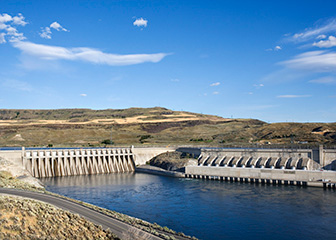How to Become an Environmental Engineer About this section

A bachelor’s degree is needed to become an environmental engineer.
Environmental engineers typically need a bachelor’s degree in environmental engineering or a related field, such as chemical, civil, or general engineering. Some employers prefer to hire candidates who have gained practical experience in an internship or cooperative education program.
Education
High school students interested in becoming an environmental engineer should take classes in chemistry, biology, physics, and math, including algebra, trigonometry, and calculus.
Entry-level environmental engineering jobs typically require a bachelor’s degree in engineering. Programs usually include courses in subjects such as construction systems, engineering mechanics, and geochemistry and involve academic instruction, laboratory study, and fieldwork.
Some college and university programs offer cooperative education in which students gain practical experience while completing their studies. Students also may get relevant experience through internships or by volunteering in positions that focus on the environment.
Bachelor’s degree programs usually take 4 years, but some colleges and universities have 5-year engineering programs that lead to both a bachelor’s and a master’s degree.
Employers often prefer to hire graduates of ABET-accredited engineering programs. A degree from an accredited program is usually necessary for engineers to become licensed.
Licenses, Certifications, and Registrations
Licensure is not required for entry-level environmental engineers.
Experienced engineers may obtain a Professional Engineer (PE) license, which allows them to oversee the work of other engineers, sign off on projects, and provide services directly to the public.
State licensure generally requires a bachelor’s or higher degree from an ABET-accredited engineering program, a passing score on the Fundamentals of Engineering (FE) exam, several years of relevant work experience, and a passing score on the PE exam.
Each state issues its own license. Most states recognize licensure from other states if the licensing state’s requirements meet or exceed their own licensure requirements. Several states require engineers to take continuing education to keep their licenses.
After licensing, environmental engineers can earn board certification from the American Academy of Environmental Engineers and Scientists. This certification shows that an environmental engineer has expertise in one or more areas of specialization.
Some states require environmental engineers to have Occupational Safety & Health Administration (OSHA) Hazardous Waste Operations and Emergency Response Standard (HAZWOPER) certification. HAZWOPER certification includes training in health hazards, personal protective equipment, site safety, recognizing and identifying hazards, and decontamination. Refresher training may be required to maintain certification.
Advancement
As engineers gain knowledge and experience, they take on more difficult projects and have greater independence to develop designs, solve problems, and make decisions.
Some environmental engineers advance to become technical specialists or to supervise a team of engineers and technicians. Others become engineering managers or project management specialists to direct and coordinate the activities of specific projects.
Important Qualities
Communication skills. Environmental engineers must explain plans, specifications, findings, and other information both orally and in writing to technical and nontechnical audiences.
Creativity. Environmental engineers must be able to design systems that interact with the machinery and equipment components of a larger system.
Interpersonal skills. Environmental engineers coordinate with a variety of workers, such as the engineers and scientists who design systems and the technicians and mechanics who put systems into practice.
Math skills. Environmental engineers use calculus, trigonometry, and other math in their analysis, design, and troubleshooting work.
Problem-solving skills. Environmental engineers must identify and anticipate problems to design systems that prevent or mitigate environmental damage.
 United States Department of Labor
United States Department of Labor









